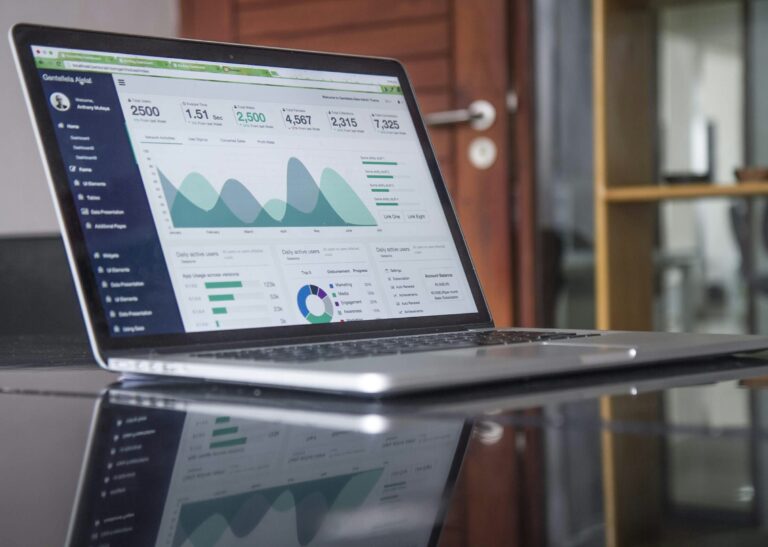Director of Product | London
This Director of Product page provides information and resources for both employers and candidates in the field of product management.
For employers, we offer insights on the role of a Director of Product, including an example job description and salary expectations to help attract top talent in this highly competitive field.
For candidates, we provide guidance the skills you’ll need to advance to this level and well as the latest job opportunities that you can apply for.
What is a Director of Product?
The definition of a Director of Product is someone who is responsible for overseeing the development and management of a product or a portfolio of products. Also named Product Director, they play a critical role in driving the strategic direction and success of the product, working closely with cross-functional teams such as engineering, design, marketing, and sales. This role acts as a bridge between the business and technical teams, ensuring that the product aligns with the company’s overall goals and meets the needs of the target market.
In their role, a Director of Product is involved in various aspects of the product lifecycle, from ideation and conceptualisation to launch and ongoing improvement. They conduct market research and analysis to identify customer needs, market trends, and competitive landscape, using this information to define the product strategy and roadmap.
This person needs to collaborate with internal stakeholders to define product requirements, establish priorities, and allocate resources effectively. They provide guidance and leadership to the product development team, ensuring that the product is developed within budget, on time, and to the expected quality standards. Additionally, monitoring key performance indicators (KPIs) and customer feedback to measure product success and make decisions for the future, is crucial.
Discover how to hire a Director of Product
Director of Product objectives
Here are some common objectives and the corresponding measurement methods and tools:
Increase revenue: Including metrics such as total revenue, revenue per user, or average revenue per transaction. Tools like Google Analytics, Mixpanel, or Amplitude can provide insights into user behaviour, conversion rates, and revenue generation.
Improve customer satisfaction: Teams can measure this objective through metrics such as Net Promoter Score (NPS), customer surveys, or customer retention rates. Tools like SurveyMonkey, Typeform, or Delighted can help collect feedback and measure customer satisfaction.
Enhance user engagement: Including metrics like daily active users (DAU), monthly active users (MAU), or time spent in the product can be used to measure this objective. A Director of Product can utilise tools such as Mixpanel, Google Analytics, or Firebase Analytics to track user engagement and behaviour within the product.
Accelerate time-to-market: This objective can be measured by tracking the time it takes to release new features or updates. Tools like Jira, Trello, or Asana can help manage and track project timelines, tasks, and progress.
Improve Key Performance Indicators (KPIs): KPIs that are closely monitored will vary depending on the product and business goals but can include metrics such as conversion rates, customer acquisition cost (CAC), or user churn rate. Analytics tools like Google Analytics, Mixpanel, or Amplitude can provide insights into these metrics and help measure performance against targets.
Director of Product salary
A Director of Product salary of £100,000 to £200,000 would be expected in the current market.
If you are a candidate, remember the below top tips to negotiating your starting salary.
Do research: research the average salary for a Director of Product position in your industry and location. This information can be found through online resources, such as Glassdoor or LinkedIn, or by talking to other professionals in your network. Armed with this information, you can make a strong case for why you deserve a certain salary.
Highlight skills: During negotiations, be sure to highlight your skills and experience that make you a strong candidate for the role. Use specific examples of how you have contributed to the success of previous products or businesses
Be open: While you may have a specific salary in mind, be open to negotiation. Consider other factors, such as benefits and equity, that may be negotiable in addition to salary.
Practice your pitch: practice with a friend or mentor. This can help you feel more comfortable and confident during the actual negotiation process.
Director of Product job description
Download example Product Director job description
Product management interview questions
Read our guide to the top 75 product management interview questions, that are often asked at interview by employers.
Product Manager v Director of Product
Product Managers are responsible for guiding the development of a specific product or feature. They define the product’s vision, strategy, and roadmap and work closely with cross-functional teams to ensure its success. PMs are individual contributors.
In contrast, Directors of Product oversee a broader product portfolio and multiple Product Managers. They have a strategic focus, aligning product initiatives with the company’s long-term goals and making high-level decisions about resource allocation and portfolio performance. Directors of Product are in leadership roles.
How do I become a Director of Product?
Education: A bachelor’s or master’s degree in a related field such as business, marketing, computer science, or product management can provide a strong foundation. While not always a requirement, formal education can help you develop a well-rounded understanding of business principles, marketing strategies, and product development processes.
Product Management experience: Start by working in entry-level product management roles or related positions such as Product Analyst or Product Manager. This will allow you to learn and master the core principles, including market research, product strategy, roadmap development, and cross-functional collaboration.
Develop technical skills: While not all Director of Product roles require deep technical expertise, having a solid understanding of technology and software development processes can be beneficial. Familiarise yourself with concepts like agile methodology, software development lifecycle (SDLC), and user experience (UX) design. This knowledge will help you effectively communicate with engineering teams and make informed decisions about product development.
Hone leadership skills: Seek opportunities to lead cross-functional teams, collaborate with stakeholders, and effectively communicate your product vision and strategy. Develop your ability to influence and inspire others, as well as to manage conflicts and negotiate priorities.
Build a strong Product Management toolkit: Familiarise yourself with industry-standard product management frameworks such as Agile, Scrum, or Lean Startup. Additionally, explore various product management methodologies, tools, and techniques such as user research, prototyping, user testing, and data analytics. Continuously expand your toolkit to stay up to date with the latest trends and best practices in the field.
What skills employers looking for?
Creating a job description is a difficult task for a Product Director / Director of Product role – each business will have different requirements depending on its size, how established the business is, the budget, and what product the business sells, from software, a service to a tangible product. Saying this, businesses looking to fill a vacancy at this level are more than likely looking for these skills:
Business acumen
Strong understanding of the business and financial aspects of product management. This includes the ability to develop business cases, manage budgets, and forecast revenue.
Customer first approach
Evidence of combining product experience and knowledge with market insight to deliver a product roadmap that has met and exceeded the actual needs of customers – rather than the perceived needs.
A Product Director should have a deep understanding of customer needs and be able to develop products that meet those needs. This requires a customer-centric approach to product development and a willingness to gather and incorporate customer feedback throughout the product development process.
Agile working
Defined as ‘bringing people, processes, connectivity and technology, time and place together to find the most appropriate and effective way of working to carry out a particular task. It is working within guidelines (of the task) but without boundaries (of how you achieve it).’This is an important team management skill, creating the right environment for success.
Problem solving
The ability to foresee pain points and roadblocks within the product roadmap and creating a plan to overcome these in a timely and cost-effective way.
Creativity
A Director of Product should be able to think creatively to come up with innovative product ideas that will resonate with customers and differentiate the company from its competitors.
Coaching
Evidence of taking teams on a journey, from understanding the business vision and buying into the product direction completely. Businesses will want to see candidates who have showcased influencing skills and can give proven examples of coaching teams towards success.
As a key member of the leadership team, this person must be an effective leader who can inspire and motivate their team to achieve their goals. This requires strong communication skills, the ability to delegate effectively, and a collaborative approach.
Lifecycle experience
Becoming increasingly popular is the requirement for candidates to have ‘full stack’ experience and taking products through the whole product lifecycle, from research and development to maturity.
While not always required, many employers look for a product leader with technical expertise in areas such as software development or engineering. This allows the Product Director to work closely with the development team and ensure that product requirements are technically feasible.
Product Director recruitment: case study
We’ve recently placed a Product Director with a client, evaluagent. Read what their Chief People Officer, Jayne Hart, had to say about the recruitment experience and working with us.




